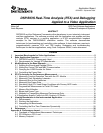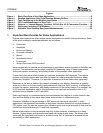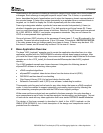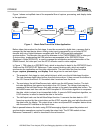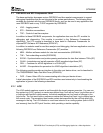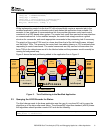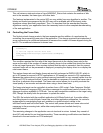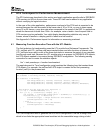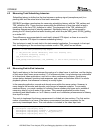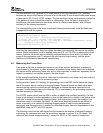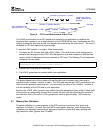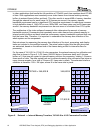
SPRAA56
2 DSP/BIOS Real-Time Analysis (RTA) and Debugging Applied to a Video Application
Figures
Figure 1.
Basic Data Flow of the Video Application...................................................................... 4
Figure 2.
Detailed Application Data Flow Showing Memory Buffers........................................... 8
Figure 3.
Task Partitioning in the Modified Application ............................................................... 9
Figure 4.
CPU Load Measurement at Run-Time .......................................................................... 15
Figure 5.
External
↔
Internal Memory Transfers, YUV4:2:0 to 4:2:2 Conversion Function .... 16
Figure 6.
Workspace Including RTA Windows............................................................................ 22
Figure 7.
Statistics View Showing Benchmark Measurements.................................................. 23
1 Important Benchmarks for Video Applications
Diverse video applications often require similar benchmarks to quantify their performance. Some
of the most commonly needed benchmarks are as follows:
• Frame rate
• Resolution
• End-to-end latency
• Processor utilization
• Bitrate*
• Quantization factor*
• Frame type*
• Group-of-pictures (GOP) structure*
Items marked with an asterisk are of importance in applications where encoders or decoders are
involved. This application note provides a method for measuring many of these benchmarks
during the capture, processing, and display phases of the example video application.
Frame rate is the rate at which frames are captured, processed, and displayed. The capture,
process, and display frame rates can differ by design or under overloaded conditions where
frames are “dropped.” Therefore, it is important to measure all three frame rates separately.
Resolution is the size in pixels of the capture, processing, and display. Resolution is typically
static at run-time, so it is not usually benchmarked with real-time tools. However, it is important
to know the capture, processing, and display resolutions of the system design. For example, the
H.263 loopback application used in this application note captures and displays video in D1
resolution and processes in 4CIF resolution.
End-to-end latency is a measurement of the time between the capture of a video frame in real-
time and the display of that same video frame some number of milliseconds later.
Processor utilization is the percentage of DSP resources used by an algorithm. In video
applications, the significant benchmarks of processor utilization include not only the number of
CPU cycles used, but also the memory bus utilization since such large amounts of data must be
moved from external memory to L2 and back repeatedly.
Bitrate is the number of bits per second output by a video encoder, or delivered to a video
decoder. Higher bitrates are generally associated with higher quality video. The bitrate often
varies with the complexity and motion in a video source, so it is important to measure bitrate
dynamically in video applications.



